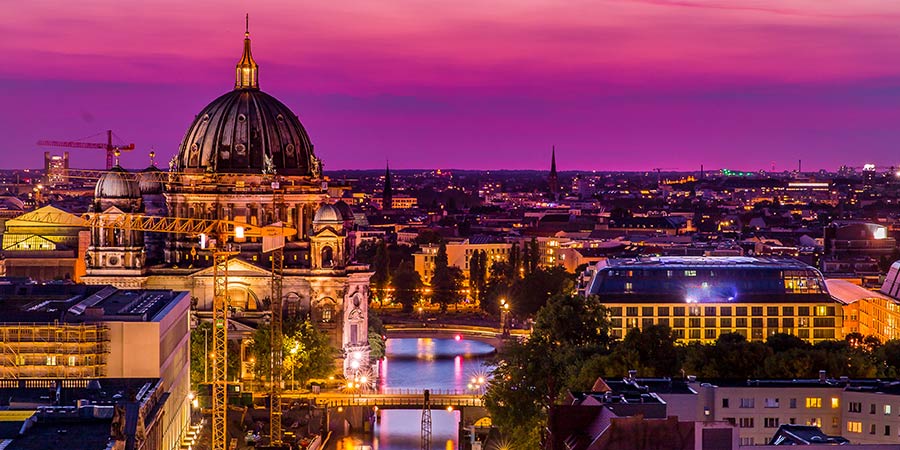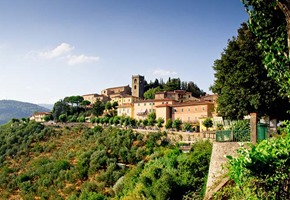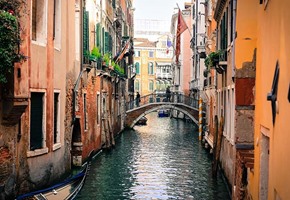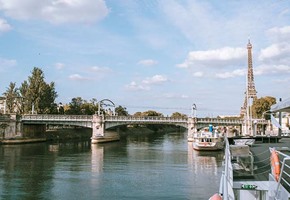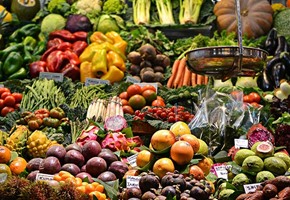Visiting Berlin is like taking a whistlestop tour through the history of 20th-century Europe. Now a friendly, stylish and cultural city, it has endured a turbulent past like no other European capital and commemorates 35 years of the fall of the Berlin Wall on 9th November 2024.
Understandably given Berlin's history, the German capital feels like a conglomeration of many cities and it is hard to pinpoint its 'city centre'. The quaint medieval houses of Nikolaviertel - where Berlin was founded - can lay claim to being Berlin's traditional centre, but this restored quarter is more of a living museum and restaurant hotspot these days.
After the division of the city in the wake of World War Two, Berlin had two centres. The bourgeois Kurfürstendamm (known colloquially as Ku'damm) became the focus of life in West Berlin, while the Communist-controlled East Berlin tried to transform Alexanderplatz during the Cold War into a socialist paradise. Once bisected by the Berlin Wall, it could be argued that Potsdamer Platz with its gleaming skyscrapers, shopping malls and entertainment attractions has become the centre of unified Berlin.
The truth is that any of these could be considered Berlin's city centre, but most tourists prefer to stay in the area surrounding Alexanderplatz and the Brandenburg Gate.
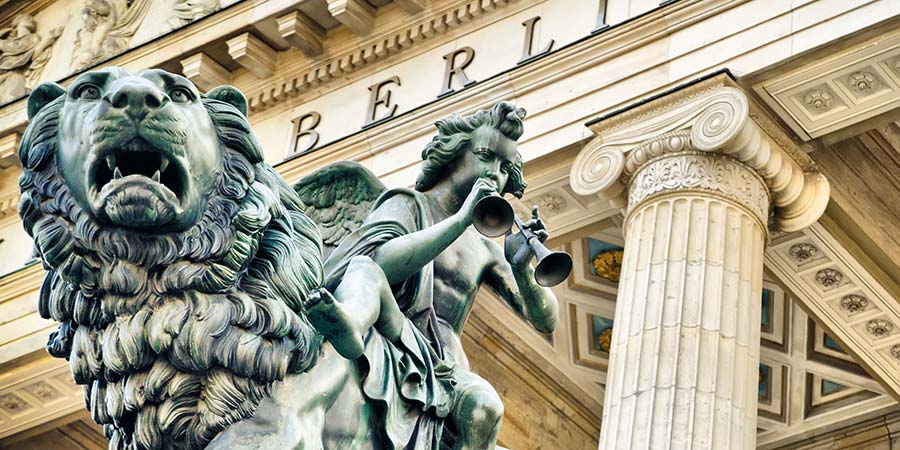
What's the history of Berlin
There's a good chance you'll already know a fair bit about Berlin's history. As the capital of the Kingdom of Prussia, Berlin only became a major world city at the start of the 20th century. Still in existence today, Clärchens Ballroom opened in 1913 and kick-started Berlin's reputation for lively and often decadent nightlife - tales that formed the basis of the hit musical Cabaret.
However, this carefree spirit was soon to be lost and would not return for more than half a century. Adolf Hitler and his Nazi regime made Berlin its capital, and the city consequently suffered extreme damage during World War Two. Up to a third of Berlin was destroyed during the conflict, after which it was divided into four sectors controlled by the US, the UK, France and the USSR. The Cold War increased tensions between the USSR and the western Allies before Berlin was divided by the Berlin Wall in 1961.
Families and neighbours were separated almost overnight while Soviet tanks and guards became familiar sights on the streets of East Berlin. It is a period of time that launched a thousand spy novels and films. On 9 November 1989, the Wall finally came down, reuniting the two sides of this city after 28 years of division.
Since then, Berlin has flourished into a welcoming, cosmopolitan city of world-renowned nightlife, culture and history. It's a city that doesn't forget its past but has truly embraced the future.
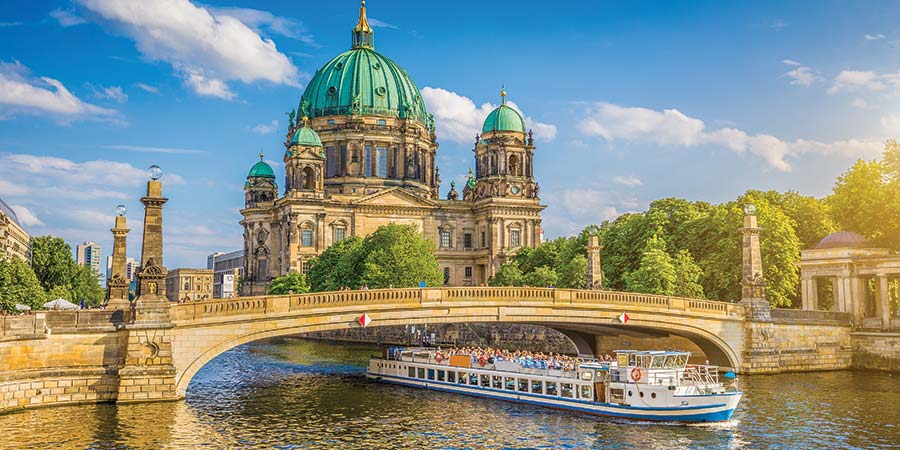
Top cultural attractions in Berlin
There's so much culture in Berlin, much of which you can experience on our Grand Imperial Cities tour. Before the ascent of the Nazis, Berlin was synonymous with culture and still has numerous theatres from the time. In addition to the aforementioned Clärchens Ballroom, you could visit the Berliner Ensemble, established in 1892, which was a favourite of playwright Bertolt Brecht.
Appropriately, the UNESCO-listed Museum Island houses a wide selection of museums including the Pergamon Museum and the Bode Museum. Over the Spree River from Berlin Cathedral, you can find the interactive DDR Museum, which showcases life in the old East Germany. For people interested in social aspects of the Cold War, you could also head to Trabiworld and join a 'Trabi Safari' in which you drive around the sights of Berlin in a puttering yet charming Trabant - the much-maligned two-stroke vehicles that were the symbolic cars of the Eastern Bloc.
For art lovers, visiting the Old National Gallery on Museum Island gives you the opportunity to view classical art, while the East Side Gallery displays colourful and often satirical street art on a section of the Berlin Wall.

Best places to visit in Berlin
Berlin is not short of fantastic sights no matter what your interests. The verdant two square miles of the Tiergarten contains the neoclassical Bellevue Palace, home to German presidents since 1994. You can also find the most-visited zoo in the world here, with nearly 1,400 species of animals. Berlin's Prussian history resulted in a number of palaces. The Baroque Charlottenburg Palace was built for the wife of Frederick the Great, the first King of Prussia. It was he who also initiated the construction of Schloss Sanssoucci. Found in nearby Potsdam, this rococo palace was built in 1747 as the king's summer house, with extensive manicured grounds, magnificent fountain and vineyards.
However, one of the main reasons people visit Berlin is for its history. The city swells with poignant and moving landmarks. A good place to start a tour is Checkpoint Charlie. This iconic former border crossing featured in a catalogue of spy novels and films while, on nearby Niederkirchnerstrasse, you can see remnants of the Berlin Wall and former government buildings that now house interesting and often emotional museums.
Making your way towards Potsdamer Platz, look out for a double row of cobbles in the pavement signifying the route of the Berlin Wall. A stark 1960s East German watchtower hidden down Erna-Berger Strasse brings home the authoritarian nature of the regime while, for pop culture fans, you could take a short detour down Köthener Strasse. Home to the Hansa Studios where David Bowie recorded Heroes, it is believed that the nearby stretch of wall inspired the famous lyrics: "I can remember, standing by the wall, and the guns shot above our heads."
Crossing Potsdamer Platz, you soon find yourself at probably the most emotive site in Berlin - the Memorial for the Murdered Jews of Europe. More than 2,700 blocks lie in rows, each of different sizes to represent the ages of those killed. It's purposely disorientating to convey the terror faced by the Jewish community. Eerie and sobering, this touching memorial is a must-visit for anyone with an interest in history or society.
Near to here is arguably Berlin's most famous location, the Brandenburg Gate. A grand neoclassical structure with 12 Doric columns and a statue of a goddess perched on top, it was built in the 18th century under the orders of the Prussian king, but became a symbol of Berlin and unity after the fall of the wall in 1989. The Reichstag is very close to here and, as the seat of the German government, played a large part in the story of the nation's history. It is now topped by a Norman Foster-designed dome and offers great views across the city. Free tours are available but booking well in advance is advised.
For a heart-rending glimpse into the social impact of the Berlin Wall, head to Bernauer Strasse. Nearly a mile long, this stretch of road contains the Berlin Wall Memorial. A preserved section of the Wall and the wide no-man's-land behind it shows the size of the divide. Along the street, there are exhibits commemorating the victims and art on the gables of buildings detailing the effects of this enforced separation.
When talking about landmarks in Berlin, there is one that is unavoidable - no matter where you find yourself. The Fernsehturm (TV Tower) pierces the sky above Alexanderplatz, reaching a height of more than 1,200 feet. Booking a ticket for the observation deck (666 feet) provides excellent views across Berlin. You could opt to spend time in the revolving restaurant while Berlin gently rotates around you.

Best places to eat in Berlin
Like the city itself, Berlin's cuisine is varied but, depending on your tastes, can be incredibly rewarding. Often dubbed the 'vegan capital of the world', you can find everything from high-end molecular gastronomy to iconic fast-food that's synonymous with the city.
Picture German food and you might imagine large lumps of pork, potatoes or sauerkraut. Traditional Berlin food does use these ingredients - to great effect too - but also includes fish such as rollmops and carp.
From the three-Michelin starred Rutz fine dining restaurant to authentic German food at the 17th-century Zur Letzten Instanz and street-side stalls popular with locals, you are never short of options when dining in Berlin.
It might seem incongruous, but one of Berlin's biggest culinary successes is the döner kebab. When Turkish workers were invited into the country in the 1960s, they brought with them the kebab - at the time this was relatively unheard of in western Europe. In the intervening years, it became a staple of busy Berliners' diets and the city popularised this on-the-go snack. Another fast-food dish popular here is Berlin through and through, the currywurst - a dish of smoked sausage covered with tangy tomato sauce and a flickering of curry powder.
As for drink, Germans take great pride in their beer, especially Berliners. Search out a traditional Berliner Weisse - a slightly sour wheat beer - or opt for an opulent Kaiser Cup cocktail at the grand Hotel Adlon, where it was invented.

Why Berlin is a great city to visit
Well, in the words of a popular German song: Berlin, du bist so wunderbar (Berlin, you are so wonderful). It's a city that can captivate many people - art lovers, history buffs, foodies and even those who like to stay up all night listening to techno music in sprawling former Soviet heating plants. Each district (or 'kiez' in the Berlin dialect) has a different feel.
Not only is it largely less busy than other European capitals - although the Brandenburg Gate does get its fair share of tourists - it's easy to get around. For around €9, you can take as many trips within 24 hours on Berlin's comprehensive public transport system of trains (S-Bahn), metros (U-Bahn), trams (Straßenbahn) and buses. The Ringbahn (Ringu) circles everywhere that could be considered to be central Berlin, while numerous other lines dissect all areas meaning it shouldn't take you too long to get to the next wonderful location.
Overcoming adversity with positivity, fantastic innovation and accepting attitudes summarises Berlin, a city brimming with incredible attractions and sights of huge cultural and historical interest.
Best time to go to Berlin
Sharing a drier but similar climate to the UK, the best months to visit are from March to October. The spring months are quieter and cooler, while Berlin comes alive during the warm summer months as residents enjoy the alfresco lifestyle.
Visit Berlin with Great Rail Journeys on the following tours:

